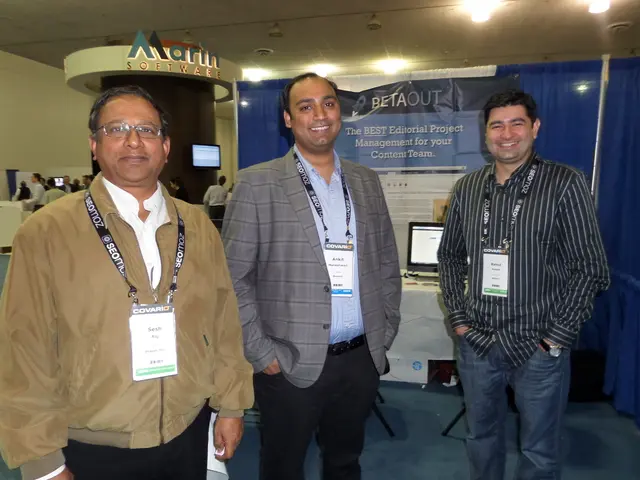Exploring Advanced Cybersecurity: A Journey through AI-Driven Cyber Hazards
In the ever-evolving world of cybersecurity, a new threat has emerged: AI-driven malware. This sophisticated form of malicious software leverages artificial intelligence to adapt, evade detection, and automate attacks, fundamentally changing traditional cybersecurity defenses and practices.
At the forefront of the fight against these advanced threats is Jim Koohyar Biniyaz, the CEO and Co-Founder of ResilientX Security. With over a decade of experience in cybersecurity, Research & Development, and management, Biniyaz has held multiple key positions in various organizations, including Engineering, Product, and DevOps Manager. His LinkedIn profile can be accessed at https://www.linkedin.com/in/akbiniyaz/, and he can also be found on Twitter at https://twitter.com/JimBiniyaz.
The sophistication of AI-driven malware is diverse, ranging from rudimentary machine learning methods to deep learning techniques. This malware can absorb from its surroundings, make decisions based on analyzed data, and modify its tactics, making it more challenging to identify and counteract. The most recent phase of AI-driven malware exploits generative adversarial networks (GANs) to create malware indistinguishable from harmless software.
One of the significant impacts of AI-driven malware on traditional cybersecurity practices is the ineffectiveness of signature-based defenses. As malware evolves too quickly for static detection methods, human analysts are often overwhelmed by the volume and complexity of AI-enhanced threats, necessitating automated detection and response.
To counteract AI-driven malware, organizations should employ a range of strategies that incorporate AI themselves. These include the adoption of AI-powered threat detection systems, automated response and security orchestration, proactive vulnerability management through predictive analytics, enhanced threat hunting and behavioral analysis, continuous updating of defensive models, and employee training and awareness.
ResilientX Security, founded by Biniyaz, is at the forefront of this fight. Their website is accessible at https://resilientx.com. The company's solutions are designed to help organizations detect potential threats, predict attacks, and automate responses, providing a proactive approach to cybersecurity.
In addition to technical solutions, human vigilance against sophisticated AI-driven social engineering attacks remains vital. Regular employee training can lower the risk of successful attacks, and incident response plans can help organizations recover from breaches and restore normal operations.
Governments and industry groups also have a role to play. Governments should mandate specific cybersecurity practices and data protection standards, while industry groups can facilitate the sharing of threat intelligence among organizations. Both the government and industry should invest in research and development to devise more potent defenses against AI-driven malware.
Inbuilt security, such as strong access controls, data encryption, and regular software updates, is crucial in defending against AI-driven malware. Proactive cybersecurity measures, including attack surface management and network vulnerability scanning, are essential in countering AI-driven malware.
In conclusion, the evolution of AI-driven malware demands that organizations integrate AI into their cybersecurity practices—embracing smarter detection, rapid automated responses, and proactive threat forecasting—while also fortifying human factors to stay ahead of increasingly sophisticated cyber threats. Traditional static defenses alone no longer suffice in this rapidly changing threat landscape.
- Jim Koohyar Biniyaz, a seasoned professional in cybersecurity, data-and-cloud-computing, and technology, is the CEO and Co-Founder of ResilientX Security, leading the fight against AI-driven malware.
- Incorporating AI-powered threat detection systems, automated response and security orchestration, predictive analytics for proactive vulnerability management, enhanced threat hunting and behavioral analysis, and continuous defensive model updates are crucial strategies to combat AI-driven malware.
- Employee training and vigilance against sophisticated AI-driven social engineering attacks, such as phishing, is vital in lowering the risk of successful attacks and ensuring incident response plans are in place for breach recovery.
- Governments and industry groups play a critical role in this battle, as they can mandate specific cybersecurity practices, data protection standards, and facilitated sharing of threat intelligence among organizations.
- Encouraging research and development to devise more effective AI-driven malware defenses is essential for both government and industry stakeholders.
- Inbuilt security measures, including strong access controls, data encryption, and regular software updates, are critical in defending against AI-driven malware, alongside proactive cybersecurity measures, such as attack surface management and network vulnerability scanning.




